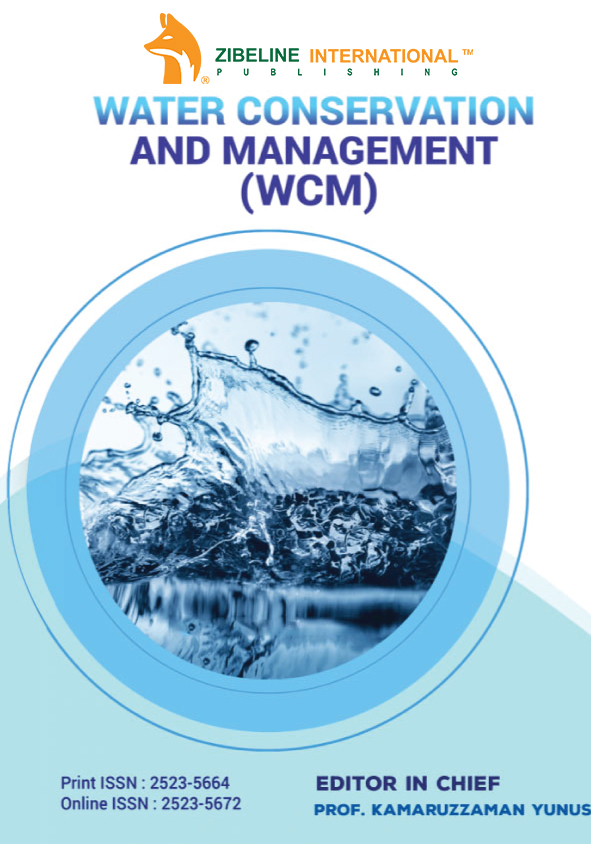EVALUATING SEA LEVEL CHANGES IN SOUTHEAST ASIA: INSIGHTS FROM CMIP6 PROJECTIONS UNDER THE SSP3-7.0 SCENARIO
Journal: Water Conservation and Management (WCM)
Author: Noah Irfan Azran , Fatin Nur Hazwani Mat Rahim, Kee Soo Chen, Jing Xiang Chung , Syamir Alihan Showkat Ali , Alex Griffiths , Liew Ju Neng , Muhammad Zahir bin Ramli , Effi Helmy Ariffin, Mohd Fuad Miskon , Kamaruzzaman Yunus, Juliana Mohamed , Mohd Fadzil Akhir, Hafeez Jeofry
Print ISSN : 2523-5664
Online ISSN : 2523-5672
This is an open access article distributed under the Creative Commons Attribution License CC BY 4.0, which permits unrestricted use, distribution, and reproduction in any medium, provided the original work is properly cited
Doi: 10.26480/wcm.02.2025.207.215
ABSTRACT
 The anticipated rise in sea levels presents a profound threat to coastal regions worldwide, including Malaysia, where about 70% of the population live in vulnerable coastal areas. This study analyses sea level projections for Malaysia’s coastal regions up to the year 2100, incorporating key contributors outlined by the Intergovernmental Panel on Climate Change, namely Thermal Expansion, Ice Sheet and Glacier Melting, Groundwater Discharge, and Glacial Isostatic Adjustment (GIA). Results indicate that sea level rise in the South China Sea (SCS), particularly in the South China Sea Peninsular Malaysia (SCSPM) and the South China Sea East Malaysia (SCSEM), is expected to exceed that of other Malaysian coastal areas such as the Straits of Malacca (SM) and the Sulu Sea (SS). Specifically, by 2100, projections suggest a maximum increase of 366.6 mm and 370.7 mm for SCSPM and SCSEM, respectively, compared to 324.2 mm for the SM and 343.5 mm for SS. In addition, the analysis reveals spatial disparities in sea level rise across Malaysian regions, with the SCS experiencing the most pronounced changes. The study also highlights shifts in the relative contributions of various factors to overall sea level rise by the end of the century. Sterodynamic processes, glacier melting, and groundwater discharge are expected to increase, accounting for 49.1%, 8.6%, and 1.4% of total sea level rise, respectively, compared to 2020 levels. Conversely, the contribution from ice sheets is projected to decline, constituting 43% of total sea level rise. Notably, GIA is anticipated to mitigate sea level rise slightly, with a projected contribution of -2.1% by 2100. These findings provide valuable insights into the differential impacts of sea level rise on Malaysian coastal regions and underscore the urgency of adaptive strategies to mitigate the potential consequences of rising sea levels throughout the twenty-first century.
The anticipated rise in sea levels presents a profound threat to coastal regions worldwide, including Malaysia, where about 70% of the population live in vulnerable coastal areas. This study analyses sea level projections for Malaysia’s coastal regions up to the year 2100, incorporating key contributors outlined by the Intergovernmental Panel on Climate Change, namely Thermal Expansion, Ice Sheet and Glacier Melting, Groundwater Discharge, and Glacial Isostatic Adjustment (GIA). Results indicate that sea level rise in the South China Sea (SCS), particularly in the South China Sea Peninsular Malaysia (SCSPM) and the South China Sea East Malaysia (SCSEM), is expected to exceed that of other Malaysian coastal areas such as the Straits of Malacca (SM) and the Sulu Sea (SS). Specifically, by 2100, projections suggest a maximum increase of 366.6 mm and 370.7 mm for SCSPM and SCSEM, respectively, compared to 324.2 mm for the SM and 343.5 mm for SS. In addition, the analysis reveals spatial disparities in sea level rise across Malaysian regions, with the SCS experiencing the most pronounced changes. The study also highlights shifts in the relative contributions of various factors to overall sea level rise by the end of the century. Sterodynamic processes, glacier melting, and groundwater discharge are expected to increase, accounting for 49.1%, 8.6%, and 1.4% of total sea level rise, respectively, compared to 2020 levels. Conversely, the contribution from ice sheets is projected to decline, constituting 43% of total sea level rise. Notably, GIA is anticipated to mitigate sea level rise slightly, with a projected contribution of -2.1% by 2100. These findings provide valuable insights into the differential impacts of sea level rise on Malaysian coastal regions and underscore the urgency of adaptive strategies to mitigate the potential consequences of rising sea levels throughout the twenty-first century.
| Pages | 207-215 |
| Year | 2025 |
| Issue | 2 |
| Volume | 9 |


